An Exceptional William and Mary 10 Inch Marquetry Longcase Clock by James Clowes, c. 1680
£26,900
Follow Us
An Exceptional William and Mary 10 Inch Marquetry Longcase Clock by James Clowes, c. 1680
This longcase clock has a marquetry walnut-veneered oak case with rising hood, flanked by ebonised barley twist columns with gilt wooden bases and capitals, ebonised mouldings and a blind fret, typical of the period. There are viewing windows to the sides. The trunk door has ebonised D-mouldings and fine panel marquetry, depicting floral, leaf and vine motifs and a bird in the middle. The oval lenticle is set in an ebonised surround. The case rests on bun feet.
The 10-inch dial has a matted centre around which there is a silvered chapter ring with Roman hour, half hour, quarter-hour, Arabic five-minute and minute divisions in a narrow track. The corners are embellished by winged cherub-head spandrels. Below the XII is a seconds ring with Arabic divisions, whilst above the VI there is a date aperture. The time is indicated by a fine pair of pierced blued steel period hands. The dial is signed by the maker along the bottom edge of the dial in the following manner: Iames Clowes Londin Fecit
The eight-day weight-driven movement has going and striking trains. The going train has an anchor escapement with seconds pendulum (there are remnants of gilding on the bob). The striking is regulated by an external count wheel and indicates the hours on a bell. In addition, it has bolt-and-shutter maintaining power, which is probably original. It is operated by a cord and keeps the movement going while it is being wound.
The clock is in excellent condition.
The maker
James Clowes (c.1643-1705), who was born in Astbury, Cheshire, became a freeman of the Clockmakers’ Company in 1671 – the same year as Thomas Tompion, Joseph Knibb, Daniel Quare and Joseph Windmills. He was working in St Giles in the Fields in 1673 not much earlier than when he probably made this clock, later at Saint Ann’s Blackfriars. He married twice, first in 1675 and the second time in 1680. He died c. 1705. There are longcase, bracket and lantern clocks by his hand known. His younger brother by eight years, John Clowes, is another notable clockmaker.
Condition
Good. Wear consistent with age and use.
PREVIOUSLY SOLD
No Results Found
The page you requested could not be found. Try refining your search, or use the navigation above to locate the post.
No Results Found
The page you requested could not be found. Try refining your search, or use the navigation above to locate the post.
YOU MAY ALSO LIKE
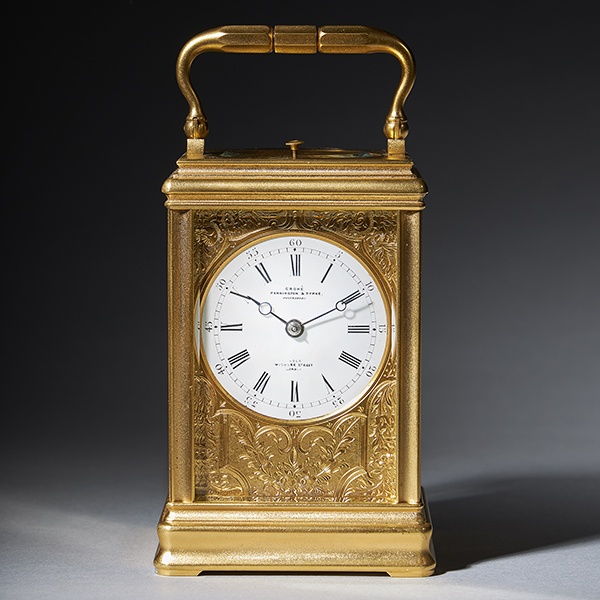
19th Century Repeating Gilt-Brass Carriage Clock by the Famous Drocourt
19th Century Repeating Gilt-Brass Carriage Clock by the Famous Drocourt £5,600 Follow Us19th Century Repeating Gilt-Brass Carriage Clock by the Famous Drocourt A superb repeating carriage clock with a gilt-brass gorge case by the famous maker...
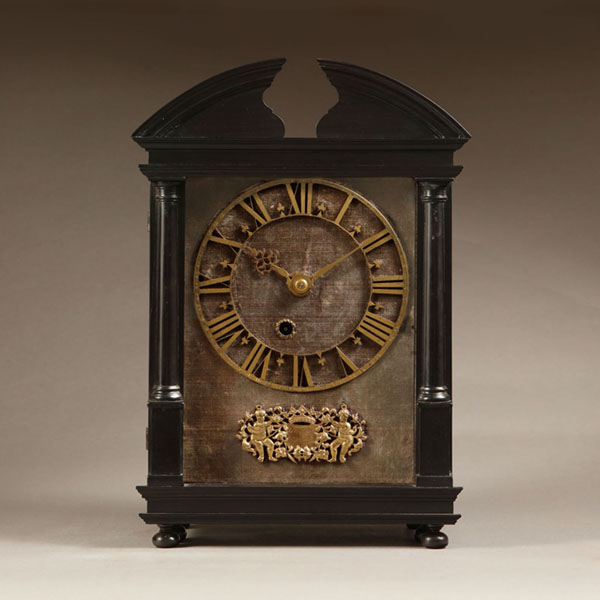
17th-Century Hague Clock Signed by Pieter Visbagh, circa 1675
Small 17th Century Hague clock made c. 1675 by Pieter Visbagh, who was apprenticed by Salomon Coster. The latter made the first pendulum clock according to the instructions of Christiaan Huygens, the internationally renowned scientist who developed the idea of applying a pendulum to a clock movement.
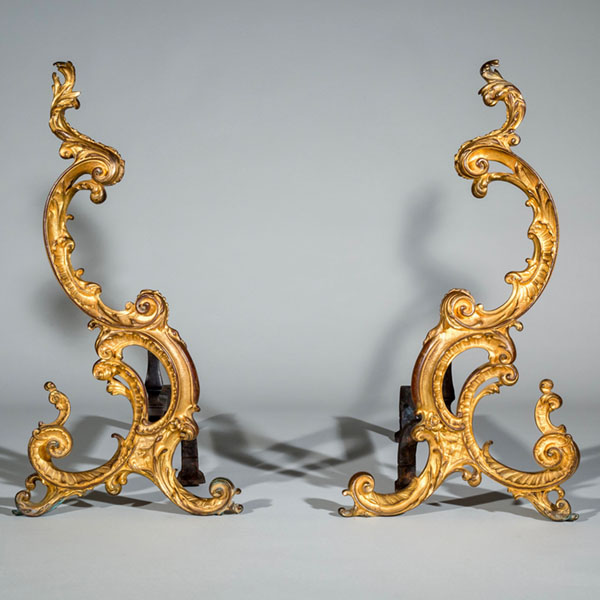
Pair of 18th-Century English Rococo Gilt Bronze Andirons or Firedogs
An exceptional pair of 18th century English Rococo gilt bronze andirons or fire dogs.
The bold shape of these andirons relate to designs of Thomas Johnson (1714–1778), one of London’s pioneers of the ‘Modern’ or French style, later known as Rococo.
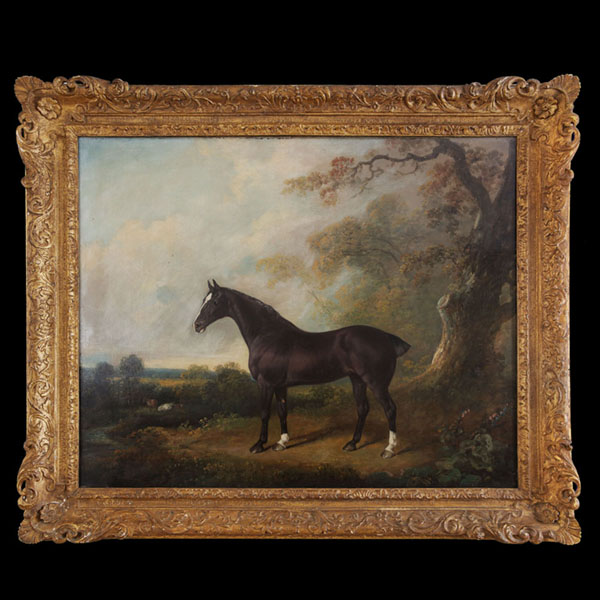
Oil Painting of a Horse Standing Proud in Woodland
Fine Art – Charles Henry Scwanfelder (1774-1837). Signed C H Schwanfelder Pinx and dated 1825. An exceptional portrait of a horse standing proud in woodland, in front of a tree-lined vista incorporating cows residing by a stream.
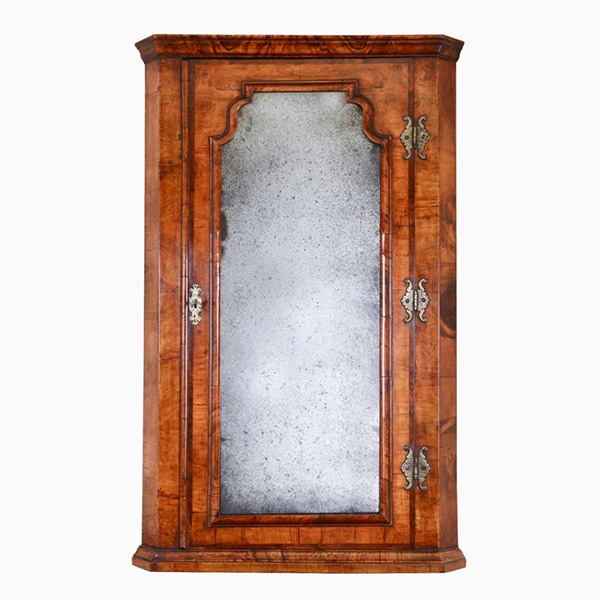
Queen Anne Walnut Corner Cupboard with Bevelled Mirror Plate
A truly remarkable find in original condition. To the door a shaped soft bevelled mirror plate is framed by a cross-grain molding of typical queen Anne design which is further cross-banded, feather-banded and edged to the opening with a single de-molding.

19th Century Repeating Gilt-Brass Carriage Clock by the Famous Drocourt
19th Century Repeating Gilt-Brass Carriage Clock by the Famous Drocourt £5,600 Follow Us19th Century Repeating Gilt-Brass Carriage Clock by the Famous Drocourt A superb repeating carriage clock with a gilt-brass gorge case by the famous maker...

17th-Century Hague Clock Signed by Pieter Visbagh, circa 1675
Small 17th Century Hague clock made c. 1675 by Pieter Visbagh, who was apprenticed by Salomon Coster. The latter made the first pendulum clock according to the instructions of Christiaan Huygens, the internationally renowned scientist who developed the idea of applying a pendulum to a clock movement.

Pair of 18th-Century English Rococo Gilt Bronze Andirons or Firedogs
An exceptional pair of 18th century English Rococo gilt bronze andirons or fire dogs.
The bold shape of these andirons relate to designs of Thomas Johnson (1714–1778), one of London’s pioneers of the ‘Modern’ or French style, later known as Rococo.

Oil Painting of a Horse Standing Proud in Woodland
Fine Art – Charles Henry Scwanfelder (1774-1837). Signed C H Schwanfelder Pinx and dated 1825. An exceptional portrait of a horse standing proud in woodland, in front of a tree-lined vista incorporating cows residing by a stream.

Queen Anne Walnut Corner Cupboard with Bevelled Mirror Plate
A truly remarkable find in original condition. To the door a shaped soft bevelled mirror plate is framed by a cross-grain molding of typical queen Anne design which is further cross-banded, feather-banded and edged to the opening with a single de-molding.
















